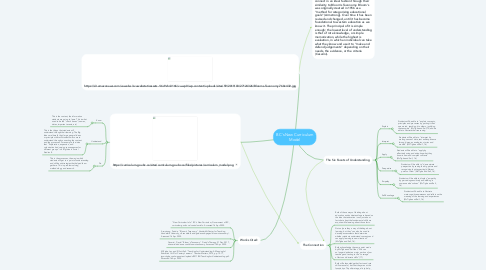
1. https://curriculum.gov.bc.ca/sites/curriculum.gov.bc.ca/files/pictures/curriculum_model.png
1.1. Know
1.1.1. This is the content, the information students are going to learn. This is what used to be the "check boxes" (names, dates, important events, etc).
1.2. Understand
1.2.1. This is the things that students will understand through their learning. The Big Ideas are literally that; large, general ideas or principles that will students will come to understand through connecting the content and the processes. For example, the idea that "Exploration, expansion, and colonization had varying consequences for different groups" is a Big Idea in Social Studies 8.
1.3. Do
1.3.1. This is the processes, the way in which students will get to a point of understanding and skills and strategies that helped them get here. This is problem solving, methodology, and research.
2. Works Cited:
2.1. "New Curriculum Info." BC's New Curriculum, Government of BC, curriculum.gov.bc.ca/curriculum-info. Accessed 16 Apr. 2020.
2.2. Armstrong, Patricia. "Bloom's Taxonomy." Vanderbilt Center for Teaching, Vanderbilt University, cft.vanderbilt.edu/guides-sub-pages/blooms-taxonomy/. Accessed 16 Apr. 2020.
2.3. Cesarini, David. "Bloom's Taxonomy." David's Therapy, 21 Dec. 2017, dcesarini.dudaone.com/blooms-taxonomy. Accessed 16 Apr. 2020.
2.4. McTighe, Jay, and Elliott Seif. "Teaching for Understanding: A Meaningful Education for 21st Century Learners." Teacher Matters, 2014, pp. 15-17, jaymctighe.com/wp-content/uploads/2011/04/Teaching-for-Understanding.pdf. Accessed 16 Apr. 2020.
3. https://s3.amazonaws.com/vuweb-s3-vuwebstaticassets-1i6c9zhn31ti6/vu-wp0/wp-content/uploads/sites/59/2019/03/27124326/Blooms-Taxonomy-768x432.jpg
4. Both the "Know-Do-Understand" model and the "Six Facets of Understanding" connect in an ideal fashion through their similarity to Bloom's Taxonomy. Bloom's was originally created in 1956 as a "method for categorizing educational goals" (Armstrong). Over time it has been revised and changed, until it has become foundational to western education as we know it. The principal of it is simple enough; the lowest level of understanding is that of rote knowledge, or simple memorization, while the highest is evaluation, in which an individual can take what they know and use it to "make and defend judgements" depending on their needs, the evidence, or the criteria (Cesarini).
5. The Connection
5.1. Both of these ways of thinking about education and understanding are based on the idea that education is not just about facts but about the fundamental skills we acquire while learning about those facts.
5.2. Not only are they a way of thinking about learning, but they "can also be used to develop assessments that determine whether students understand concepts and can apply learning to new situations" (McTighe and Seif, 16).
5.3. Both acknowledge the same point made by McTighe and Seif that " We can no longer dedicate a major portion of our teaching and testing to the “coverage” of facts and discrete skills" (17).
5.4. Both still acknowledge that facts and rote skills are useful, but that they are not the foundation. The ultimate goal is to help students learn how to use those facts and skills to engage in the world they live in and become global citizens in an ever expanding world.
6. The Six Facets of Understanding
6.1. Explain
6.1.1. Students will be able to "explain concepts, principles and processes by putting it their own words, teaching it to others, justifying their answers" (McTighe and Seif,15) and be able to illustrate their reasoning.
6.2. Interpret
6.2.1. Students will be able to "interpret by making sense of data, text and experience through images, analogies, stories and models" (McTighe and Seif, 16).
6.3. Apply
6.3.1. Students will be able to "apply by effectively using and adapting what they know in new and complex contexts" (McTighe and Seif, 16).
6.4. Perspective
6.4.1. Students will be able to "demonstrate perspective by seeing the big picture and recognizing (and respecting) different points of view" (McTighe and Seif, 16).
6.5. Empathy
6.5.1. Students will be able to display "empathy by perceiving sensitively and walking in someone else’s shoes" (McTighe and Seif, 16)
6.6. Self-Knowlege
6.6.1. Students will be able to illustrate meta-cognitive awareness and reflect on the meaning of the learning and experiences (McTighe and Seif, 16).
